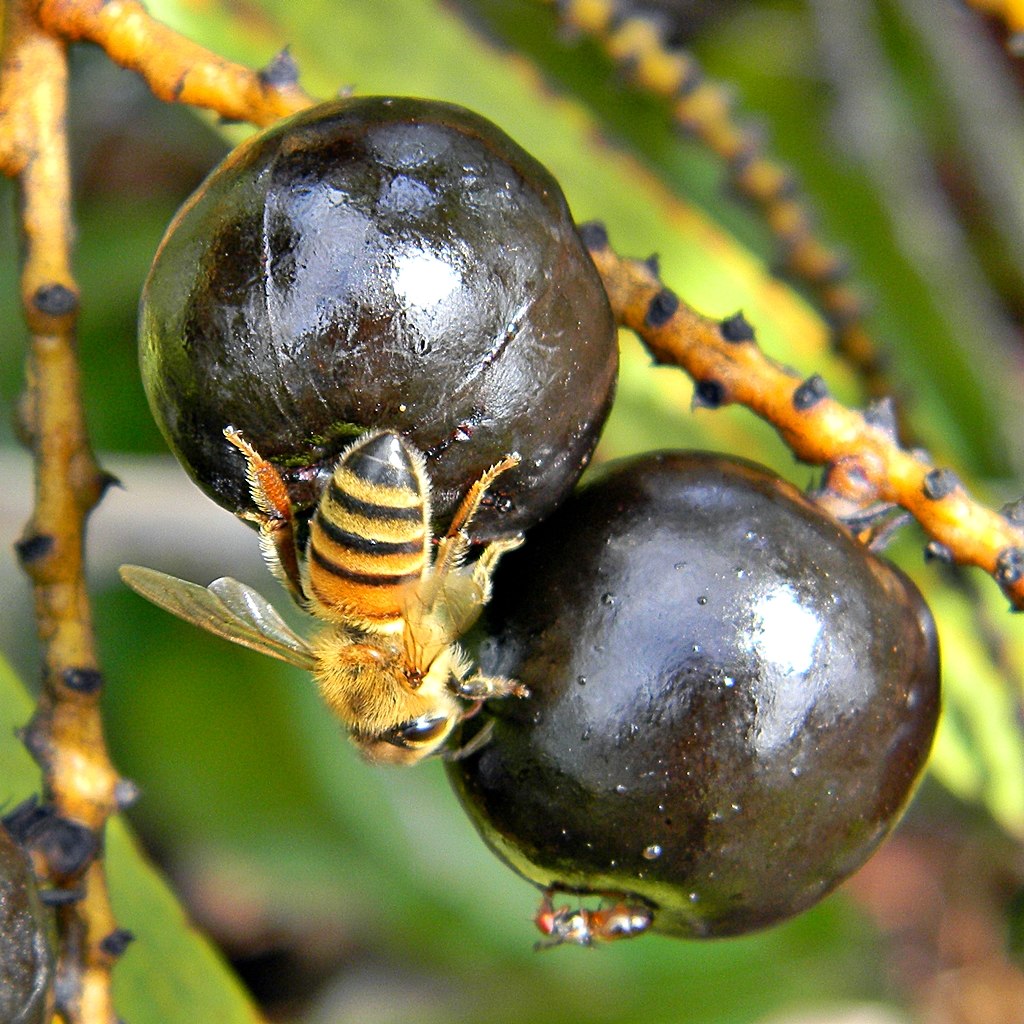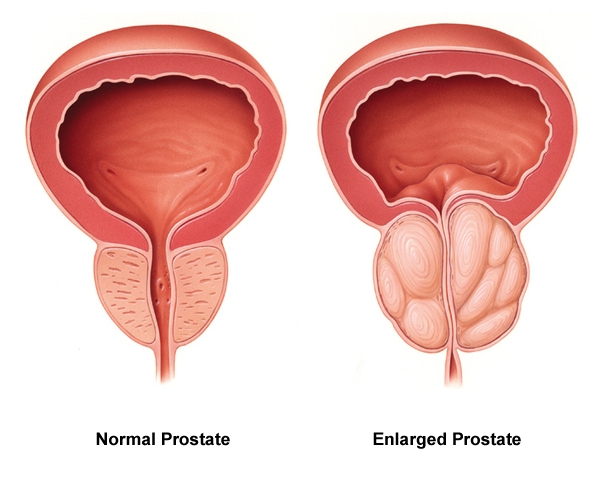Saw palmetto palm fruit might relieve the urinary symptoms of BPH, but evidence is mixed.

- Alleviating BPH. Saw palmetto is the most widely used supplement for improving symptoms of benign prostatic hyperplasia (BPH).
- Reducing prostate inflammation. Saw palmetto may also be capable of reducing inflammation in the prostate, which can help with both BPH and prostatitis.
Overview
Saw palmetto (Serenoa repens) a small tree belonging to the palm family found throughout the Southeastern United States. Its berries have historically been used by the Seminole Tribe of Florida as food and medicine, particularly for urinary issues and as an antiseptic, and even the Mayans were said to drink it as a health tonic.
Today, saw palmetto extract is one of the most widely-used herbal remedies for alleviating the urinary symptoms of benign prostatic hyperplasia (BPH) – enlargement of the prostate gland frequently seen in older men. In fact, it’s so popular that researchers have studied the effectiveness of saw palmetto for BPH for over three decades. Despite this, research evidence remains mixed.
In addition, saw palmetto is also used for other prostate health concerns such as prostatitis (prostate inflammation or infection). Finally, it is also a popular supplement for hair loss, reduced sex drive, and low testosterone levels, and is sometimes used to boost the immune system.

How Saw Palmetto Might Help With Prostate Health
Saw palmetto contains multiple active ingredients, including fatty acids and phytosterols (most notably beta-sitosterol). Researchers are not yet entirely sure how these compounds aid prostate health, but the two most likely, research-backed hypotheses are:
Inhibition of 5-alpha-reductase
Fatty acid compounds in saw palmetto may be able to inhibit 5-alpha-reductase, enzyme that converts testosterone to its more potent version called dihydrotestosterone (DHT). DHT has been implicated in prostate growth and the development of BPH. 1
Anti-inflammatory activity
Inflammation of the prostate has been implicated in both BPH and prostatitis. Certain compounds in saw palmetto have been demonstrated to reduce inflammation by modulating cytokines. 2
Saw Palmetto Uses & Benefits for Prostate Health
Saw palmetto is arguably the most popular herbal remedy for benign prostatic hyperplasia (BPH). In particular, it is used to relieve the urinary symptoms of BPH, such as:
- Frequent urination
- Difficulty starting or maintaining urination
- Excess urination at night (nocturia)
- Inability to complete empty the bladder
In addition, it is also used for other less common prostate issues, such as prostate infections and pelvic pain syndrome. Having said that, medical research seems to be split on whether saw palmetto helps with BPH, with some negative studies and some positive ones.
One possible explanation for the conflicting results is that saw palmetto might work in the short term (less than a month) but lose its effectiveness over longer periods of time. Another possibility is that some people simply don’t respond to saw palmetto because of lifestyle factors or even genetics.
In any case, the latest stance of clinical researchers – who reviewed multiple high-quality studies and summarized their results – is that “Based on high quality, long-term trials, treatment with Serenoa repens, even at escalating doses, did not improve LUTS [lower urinary tract symptoms] or Qmax associated with BPH.” 3 But this shouldn’t stop you from trying saw palmetto as a low-cost, safe alternative to pharmaceutical BPH medications to see if it works for you.

Research
Human Research
The use of saw palmetto for improving symptoms of BPH has been heavily researched since the 1980s. So far, the findings have been mixed, with some studies reporting benefits, and some reporting no effect.
Saw palmetto appears to improve urinary symptoms associated with BPH
This randomized, double-blind, placebo-controlled study examined the effect of saw palmetto on urinary symptoms most often associated with BPH. A total of 85 men were given placebo or saw palmetto daily for 6 months. The saw palmetto group had a greater improvement in symptoms and quality-of-life scores, but no change in urinary flow rate.
- The researchers concluded that “Saw palmetto led to a statistically significant improvement in urinary symptoms in men with lower urinary tract symptoms compared with placebo.“4
Saw palmetto extract permixon (320 mg) appears to improve BPH
This double-blind, randomized study compared the efficacy of pharmaceutical drug tamsulosin with saw palmetto extract permixon. A total of 811 men with BPH were given tamsulosin (0.4 mg) or permixon (320 mg) daily for 12 months. The two drugs were similarly effective at improving BPH symptoms and urinary flow rate, and permixon also resulted in a slight decrease in prostate volume.
- The researchers concluded that “…Permixon and tamsulosin are equivalent in the medical treatment of lower urinary tract symptoms in men with BPH.” 5
Saw palmetto extract (320-960 mg) does not appear to improve urinary symptoms associated with BPH
This double-blind, placebo-controlled randomized study examined the efficacy of saw palmetto extract on urinary tract symptoms attributed to BPH. A total of 369 men were given placebo or saw palmetto extract (320 mg, increased to 640 mg at week 24 and 960 mg at week 48) daily for 72 weeks. Saw palmetto was not found to improve urinary tract symptoms any better than placebo, even at 3 times the standard dose.
- The researchers concluded that “Increasing doses of a saw palmetto fruit extract did not reduce lower urinary tract symptoms more than placebo.” 6
Saw palmetto extract permixon (320 mg) may improve symptoms and sexual function in men with BPH
This double-blind, randomized study compared the efficacy of saw palmetto extract permixon with the medication finasteride. A total of 1098 men with BPH were given finasteride (5 mg) or permixon (320 mg) daily for 6 months. Both groups had similar improvements in prostate symptoms, quality-of-life scores, and urinary flow rate. In addition, individuals in the permixon group reported better sexual function and libido.
- The researchers concluded that “Both treatments relieve the symptoms of BPH in about two-thirds of patients…” 7
Saw palmetto extract (320 mg) may not always improve symptoms of BPH
In this double-blind, placebo-controlled, randomized study, 100 men with BPH symptoms were given placebo or saw palmetto extract (320 mg) daily for 12 weeks. There was no difference in scores of prostate health, erectile function, or urinary flow between the two groups at the end of the study.
- The researchers concluded that “…there was no significant beneficial effect of this S. repens extract over placebo in this 12-week trial.” 8
This randomized study looked at the efficacy of saw palmetto and finasteride, a pharmaceutical drug used for prostate issues, in men with non-bacterial prostatitis/chronic pelvic pain syndrome (CP/CPPS). A total of 64 men with CP/CPPS were given saw palmetto extract (325 mg) or fiansteride (5 mg) daily for a year. Only the finasteride group experienced improvements in symptoms.
- The researchers concluded that “CP/CPPS treated with saw palmetto had no appreciable long-term improvement…” 9
Saw palmetto as Prostasan® (320 mg) may improve symptoms of BPH and sexual dysfunction
In this pilot investigation, 82 elderly men with sexual dysfunctions (SDys) and symptoms of BPH took one capsule containing 320 mg of saw palmetto extract Prostasan daily for 8 weeks. By the end of the trial, the average prostate symptom score dropped from 14.4 ± 4.7 to 6.9 ± 5.2, whereas sexual function significantly improved based on both the Sexual Function Inventory (from 22.4 ± 7.2 to 31.4 ± 9.2) and the Urolife BPH QoL-9 sex total (from 137.3 ± 47.9 to 195.0 ± 56.3).
- The researchers concluded that “this was the first trial with saw palmetto to show improvement in BPH symptoms and SDys as well.”10
Dosage for Prostate Health
- The majority of successful studies used 320 mg doses of saw palmetto extract
- Standalone supplements typically come in 450 mg saw palmetto powder doses
- Multi-ingredient prostate health formulas typically include smaller doses of saw palmetto extract (100 mg)
Available Forms
Saw palmetto products are most commonly sold as capsules, but can also come in tablets, softgels, liquid, and tea.
- Saw palmetto fruit powder. This is the most common form of saw palmetto supplements, and should not be confused with extracts because it does not separate any ingredient and simply provides a powder from the berries.
- Saw palmetto extract. This form is standardized to contain a certain amount of the fatty acids (typically 40-90%) believed to be responsible for saw palmetto’s benefits, and comes in smaller doses than powder.
- Branded extracts. There are many different brands of saw palmetto extract, but the most popular ones are Prostasan®, Prostagutt® forte, and Permixon®. Out of these 3, permixon has been the most studied, with largely positive findings for BPH.
Supplements in Review Recommendation
- Saw palmetto extract, 320 mg for prostate health.
Despite mixed research, saw palmetto is the most popular herbal remedy for BPH. Saw palmetto might work for you, but keep in mind that research evidence is mixed, with some studies showing improvement of BPH symptoms, and others reporting no effect.
The most common dose for prostate concerns is 320 mg. The vast majority of human studies use 320 mg doses of saw palmetto extract (not to be confused with saw palmetto powder) for BPH and other prostate issues.
Leave a Reply